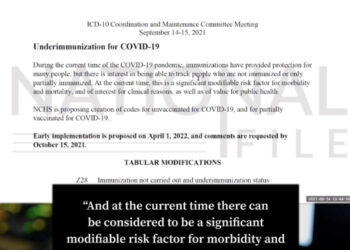Last Updated on December 4, 2021
Jonathon Moseley, a lawyer representing a number of 1/6 defendants, has claimed the former Capitol Police Chief’s congressional testimony contradicts charges against up to 700 of the defendants.
Following the 1/6 protests on Capitol Hill, around 700 people were arrested and thrown into jail. Almost all of the detainees have been charged with the obstruction of an official proceeding, with the state arguing that the evacuation of the joint Congressional session was instigated by those who, mostly peacefully, entered the building.
However, Moseley, who represents multiple detainees from 1/6, pointed to testimony given by then-Capitol Police Chief Steven Sund to the Senate Homeland Security and Governmental Affairs Committee and the Rules and Administration Committee on February 23, based off a Feb 1 letter Sund sent to Pelosi.
Moseley argued that Sund in his testimony admitted that the real reason for the evacuation of the Capitol was due to a number of pipe bombs that the Capitol Police found, first at 12:52 in the afternoon at the RNC headquarters, and then at 1:50 near the DNC headquarters.
“The U.S. Capitol Police went up to the presiding officer at the podium and said, ‘there is a threat. Congress has a preexisting rule that allows immediate recess without a vote,'” Moseley told National File. “The Capitol Police advised the presiding officer of the Senate of the threat and therefore they immediately evacuated the room.”
As Sund confirmed to Republican Oklahoma Senator James Lankford, congressional buildings near the two pipe bombs, “the Cannon House office building, as well as one of the Library of Congress buildings,” were evacuated solely due to the explosive threat, and had nothing to do with anyone protesting nearby. (READ MORE: Trump Says ‘January 6 Was A Protest’ And ‘The Real Insurrection Took Place On November 3’)
Sund, without evidence, believed that “all of this was part of a coordinated plan related to the attack on the Capitol.” Lankford questioned this narrative. “Several of them out there that would take away resources at that moment,” he noted. “But there’s no way to know that they would find it at that exact moment.”
An investigation by National File discovered a section within Sund’s Feb 1 letter to Pelosi that seems to corroborate Moseley’s line of argument. Sund wrote that at 1:51, the Capitol Police began establishing priorities for officers, including securing the perimeter and foundation of the Capitol, and looking for more pipe bombs or similar devices.
“These goals were implemented as quickly as was possible in order to facilitate the safe and expeditious return of the Members of Congress to complete their certification of the electoral votes,” Sund wrote. However, the first protestor did not enter the Capitol building until 2:12, with the House not fully recessed until 2:29.
If the orders were given after 1:51 and before 2:12 with the end goal of getting the joint Congressional session back up, but the protestors were not yet an alleged threat, it may be logical to conclude that plans had already been set in motion to evacuate Congress because of the pipe bombs, as Moseley argued, meaning the 700 defendants could not reasonably be charged with obstruction.


















